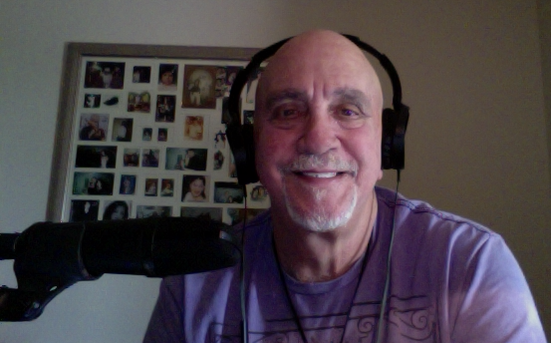There is a common understanding that each saxophone, trumpet, and trombone player in a big band has an individual part. However, that is a misconception with regard to harmony.
Traditional big band arrangements -- with 5 saxophones, 4 trumpets, and 4 trombones (13 horns) -- typically use 4 or 5-part harmony. This means 2 or 3 horns could play the same note, with unison or octave doubling, in a given harmonization.
As an example of harmonic doubling, following is a traditional way to harmonize a melody in top-down, close-position writing for 5 saxophones: The 1st alto plays a melody note and the three chord tones below the melody are played by the 2nd alto, 1st tenor, and 2nd tenor; then, the baritone doubles the 1st alto an octave lower. While there are 5 saxophones, the chord voicing is actually 4-part harmony.
Close-position 4-part harmony can also be used for the trumpets and trombones when they play together as a brass section. The 4 trumpet parts are often written first and then the trombones double the trumpets an octave lower.
Open or spread voicings can go beyond the 4-part harmony used in close-position writing. In spread vocings, the trombones and/or lower saxophones often play essential chord tones (such as 1-7-3) and the trumpets and/or higher saxophones play chord tones and tensions. Using tensions (natural or altered 9, 11, 13) makes it possible to have 5-part, 6-part, or 7-part harmony. This gives a greater amount of richness to an ensemble sound than with 4-part harmony. However, unison or octave doubling still occurs when even 7-part harmony is used in concerted saxophone & brass passages.
Given the extent of harmonic doubling in big band music, I have an idea to offer to big bands: Try playing my mid-size ensemble scores with doubled players on a part. As I envision it, this will give a fresh sound to a big band.
Of prime importance is having lines with individual tone colors instead of harmonized saxophone, trumpet, and trombone sections. To do this, an expanded palette of tone color is created by having the brass as individual colors in different mutes & open with a mix of saxophones and woodwind doubles. If they are available, including instruments such as soprano sax, flugelhorn, bass clarinet, and tuba is a good way to add more color. With this palette of color choices, each wind instrument is taken out of its customary role in a section and combined with another instrument(s) to produce a distinctive sound for a given line in the score. Creative combinations of instruments are encouraged.
As a way to begin, I recommend my piece Fanfare for big bands to try. It is reasonably easy to play and its page on my website has a suggested assignment of parts.
Bands are encouraged to experiment with my music and ideas. The Mid-Size Ensemble page has more about my approach to a jazz ensemble along with a score video that serves as a sample of my writing.
Traditional big band arrangements -- with 5 saxophones, 4 trumpets, and 4 trombones (13 horns) -- typically use 4 or 5-part harmony. This means 2 or 3 horns could play the same note, with unison or octave doubling, in a given harmonization.
As an example of harmonic doubling, following is a traditional way to harmonize a melody in top-down, close-position writing for 5 saxophones: The 1st alto plays a melody note and the three chord tones below the melody are played by the 2nd alto, 1st tenor, and 2nd tenor; then, the baritone doubles the 1st alto an octave lower. While there are 5 saxophones, the chord voicing is actually 4-part harmony.
Close-position 4-part harmony can also be used for the trumpets and trombones when they play together as a brass section. The 4 trumpet parts are often written first and then the trombones double the trumpets an octave lower.
Open or spread voicings can go beyond the 4-part harmony used in close-position writing. In spread vocings, the trombones and/or lower saxophones often play essential chord tones (such as 1-7-3) and the trumpets and/or higher saxophones play chord tones and tensions. Using tensions (natural or altered 9, 11, 13) makes it possible to have 5-part, 6-part, or 7-part harmony. This gives a greater amount of richness to an ensemble sound than with 4-part harmony. However, unison or octave doubling still occurs when even 7-part harmony is used in concerted saxophone & brass passages.
Given the extent of harmonic doubling in big band music, I have an idea to offer to big bands: Try playing my mid-size ensemble scores with doubled players on a part. As I envision it, this will give a fresh sound to a big band.
Of prime importance is having lines with individual tone colors instead of harmonized saxophone, trumpet, and trombone sections. To do this, an expanded palette of tone color is created by having the brass as individual colors in different mutes & open with a mix of saxophones and woodwind doubles. If they are available, including instruments such as soprano sax, flugelhorn, bass clarinet, and tuba is a good way to add more color. With this palette of color choices, each wind instrument is taken out of its customary role in a section and combined with another instrument(s) to produce a distinctive sound for a given line in the score. Creative combinations of instruments are encouraged.
As a way to begin, I recommend my piece Fanfare for big bands to try. It is reasonably easy to play and its page on my website has a suggested assignment of parts.
Bands are encouraged to experiment with my music and ideas. The Mid-Size Ensemble page has more about my approach to a jazz ensemble along with a score video that serves as a sample of my writing.

 RSS Feed
RSS Feed